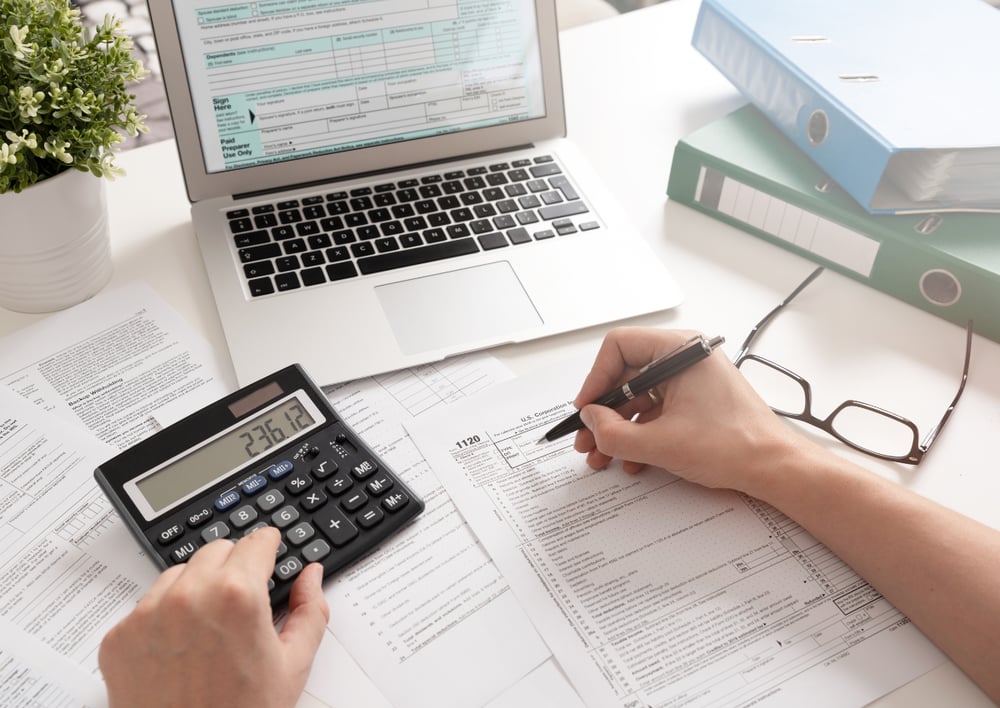Key Takeaways:
- IFRS 16 Impact: Effective since January 2019, IFRS 16 emerged from a project by IASB and FASB to bring transparency to long-term liabilities on balance sheets, ending the off-balance sheet treatment of many lease obligations.
- Changes In P&L Presentation: Under IAS 17, operating lease expenses were in the P&L statement. With IFRS 16, they are now recorded as amortization/depreciation and interest to better reflect lease-related costs.
- Accounting Complexity And Transition Relief: IFRS 16 requires more detailed accounting entries. To ease the transition, IASB provides practical options, including grandfather contracts, choices between retrospective approaches, considerations for low-value/short-term leases, and the use of software solutions for accurate lease accounting.
The implementation of IFRS 16 introduces a significant update to lease accounting standards for businesses around the globe. This new directive necessitates a comprehensive re-evaluation of how leased assets are reported in financial statements, aligning with a global shift towards greater transparency. This article will provide you a clear summary and actionable insights to navigate the changes with confidence and precision.
Adapting to IFRS 16 is streamlined with our financial technology expertise at Netgain. Our tailored solutions simplify the recalibration of leased assets, ensuring compliance with new standards effortlessly. With Netgain, turn IFRS 16 from a regulatory hurdle into a strategic opportunity.
What Is IFRS 16?
IFRS 16 is a global accounting standard issued by the International Accounting Standards Board (IASB) that stipulates how lease transactions should be recognized, measured, presented, and disclosed in financial statements. Effective January 1, 2019, it replaces the former lease guidance, IAS 17, and aims to increase transparency and comparability among organizations.1
How Does IFRS 16 Work?
The core principle of IFRS 16 is that it requires companies to bring most leases onto the balance sheet, under the concept that at the start of a lease, the lessee obtains a right to use an asset for a period of time and, in turn, has an obligation to make lease payments. This standard ensures that lessees recognize assets and liabilities for the rights and obligations created by those leases.

Key Changes Under IFRS 16
IFRS 16 aims to improve transparency and comparability in financial reporting by bringing lease obligations onto the balance sheet.2 These changes include:
Removal Of Operating Lease Classification
Previously, operating leases were not recognized on the balance sheet. With IFRS 16, operating leases are now required to be capitalized, resulting in the recognition of lease assets and liabilities on the balance sheet.
Single Lessee Accounting Model
IFRS 16 simplifies lease accounting by introducing a single lessee accounting model, eliminating the previous distinction between finance and operating leases for lessees. This means that all lease agreements are treated uniformly, making financial reporting more straightforward and consistent.
Right-Of-Use Assets
Under IFRS 16, lessees are now required to recognize a right-of-use (ROU) asset on their balance sheet. This asset represents their legal right to use the leased item, such as property or equipment, for the duration of the lease agreement. It provides a clear reflection of the lessee's economic interest in the leased asset.
Lease Liability
Lessees must also recognize a lease liability on their balance sheet. This liability represents the financial obligation to make lease payments over the term of the lease agreement. The recognition of both the ROU asset and the lease liability improves transparency by clearly showing the lessee's financial commitment related to the lease.
Explore Netgain's capabilities to see how we can help you organize your lease portfolio onto a single, unified platform, make complex calculations easier, streamline lease administration, and supply vital information for detailed reporting.
Comparing IFRS 16 With Previous Lease Accounting Standards
Here are some highlights of the significant shifts in financial reporting and insights into how the treatment of leases has evolved:
Recognition On The Balance Sheet
IFRS 16 significantly departs from previous lease accounting standards by requiring the inclusion of most leases on the lessee's balance sheet. Unlike earlier standards that permitted operating leases to remain off-balance sheet, IFRS 16 mandates the recognition of both right-of-use assets and lease liabilities. This change enhances transparency and ensures a more accurate representation of a company's financial obligations and assets.

Uniform Accounting Treatment
IFRS 16 simplifies lease accounting by introducing a single lessee accounting model, eliminating the prior distinction between finance and operating leases for lessees. Under previous standards, finance and operating leases followed different accounting rules. This harmonization simplifies financial reporting and makes it more consistent for all types of leases.
Lease Expense Presentation
The way lease expenses are presented in financial statements has shifted with the adoption of IFRS 16. Under previous standards, operating lease expenses were typically reported as operating expenses in the income statement. However, IFRS 16 replaces these operating lease expenses with depreciation and interest expenses.
Disclosure Requirements
IFRS 16 introduces enhanced disclosure requirements compared to previous lease accounting standards. These requirements are designed to provide stakeholders, including investors and creditors, with more detailed information about a company's lease commitments. The enhanced disclosures include information about the nature of lease arrangements, the financial impact on the company's financial statements, and additional qualitative and quantitative disclosures.
The Benefits Of Implementing IFRS 16
The adoption of IFRS 16 offers several noteworthy benefits for both companies and stakeholders. Here are the key advantages of implementing IFRS 16:
Increased Transparency
IFRS 16's requirement to recognize lease obligations on the balance sheet significantly enhances financial transparency. By bringing these obligations onto the balance sheet, stakeholders, including investors and creditors, gain a clearer understanding of a company's financial position.
Improved Comparability
IFRS 16's inclusion of lease liabilities on the balance sheet improves the comparability of financial statements across different entities. With lease obligations presented consistently, it becomes easier for investors and financial analysts to assess the financial performance of various companies.
Enhanced Accountability
The recognition of both lease assets and liabilities under IFRS 16 emphasizes accountability in financial reporting. It ensures that a company's lease-related obligations are accurately represented in its financial statements, leaving no room for off-balance sheet treatment that can obscure the true financial picture.3
Simplified Financial Reporting
IFRS 16 simplifies financial reporting by introducing a single accounting model for lease accounting. This model eliminates the need for complex lease classification criteria, which were prevalent in previous standards. The simplification of lease accounting not only reduces the risk of misclassification and errors but also streamlines the financial reporting process.
The Impact Of IFRS 16 On Financial Statements
The implementation of IFRS 16 has significant implications for a company's financial statements. Here's how it affects the key financial statements:
- Balance Sheet: With the capitalization of lease assets and liabilities, the balance sheet will reflect increased total assets and liabilities. Additionally, the separation of lease liabilities into current and non-current portions will be required.
- Income Statement: Under IFRS 16, lease expenses are replaced with depreciation charges for the right-of-use asset and interest expenses for the lease liability. This results in higher operating profits (EBITDA) and increased interest expenses, affecting the net profit and earnings per share (EPS).
- Cash Flow Statement: The cash flow statement will see changes as lease payments will be classified as operating activities instead of financing activities. This may affect the presentation and analysis of cash flow from operations.
The Role Of Technology In Implementing IFRS 16
Technology plays a crucial role in successfully implementing IFRS 16 and streamlining lease accounting processes. Here's how technology can assist:
- Lease Management Software: Specialized lease accounting software can help manage lease data, calculate lease liabilities, and automate lease accounting entries, ensuring accuracy, efficiency, and compliance.
- Data Integration And Analysis: Technology allows for seamless integration of lease data from various sources, enabling comprehensive analysis and reporting on lease obligations and financial impacts.
- Centralized Lease Repository: Software solutions provide a centralized lease repository, ensuring easy access to lease documents, terms, and critical lease data for ongoing monitoring and analysis.
- Automation And Alerts: Automated systems can generate alerts for lease expiry, rent escalations, and other key lease events, ensuring proactive management of leases and compliance with IFRS 16 requirements.
The Implementation Challenges Of IFRS 16
While implementing IFRS 16, organizations may face specific challenges. Here are some common implementation challenges:
- Data Collection And Management: Gathering and organizing lease data, including lease terms, options, and payments, can be a complex task, especially for companies with a large lease portfolio. Implementing effective data management systems is crucial.
- Systems And Processes: Adopting appropriate systems and processes to handle the new lease accounting requirements can be challenging. Organizations may need to invest in or update software solutions capable of handling lease calculations, reporting, and compliance.
- Change Management: Implementing IFRS 16 requires educating employees about the changes and their impact on the organization's financial reporting. Change management strategies should be developed to ensure seamless adoption and understanding of the new standard.
Netgain offers advanced lease accounting software tailored for IFRS 16 intricacies so you can adeptly manage these challenges. Netgain simplifies lease management and compliance, allowing you to concentrate on strategic business operations. Contact us today and discover the benefits of Netgain for your IFRS 16 needs!
Final Thoughts On IFRS 16
IFRS 16 has revolutionized lease accounting by bringing transparency and comparability to financial reporting. The introduction of this accounting standard has made a significant impact on how companies recognize, measure, and present leases.
Leveraging technology solutions like those offered by Netgain can simplify the process and ensure compliance with the standard. Netgain is here to make finance and accounting simpler, standardized, and automated. Get in touch with us today to learn how our products can transform your lease compliance, fixed assets, loan management, and financial reporting processes. Simplify. Streamline. Succeed.
Frequently Asked Questions About IFRS 16
What was the objective behind introducing IFRS 16?
The objective of introducing IFRS 16 was to address the issues related to operating leases being treated as off-balance sheet items. By requiring the recognition of lease assets and liabilities on the balance sheet, IFRS 16 aims to enhance transparency and comparability in lease accounting.
What is the scope of IFRS 16?
IFRS 16 applies to all lease arrangements, except for leases of intangible assets, licenses of intellectual property, and certain exemptions for short-term leases (leases with a lease term of 12 months or less) and leases of low-value assets.
What is the definition of a lease liability under IFRS 16?
A lease liability, under IFRS 16, represents the lessee's obligation to make lease payments arising from a lease. It includes the initial measurement of the lease liability, subsequent remeasurement, and adjustments for lease modifications.
How does IFRS 16 impact lessees?
IFRS 16 significantly impacts lessees as it requires them to recognize lease assets and liabilities on the balance sheet for almost all lease arrangements. Lessees will now present their lease liabilities as a financial liability and recognize depreciation of the right-of-use asset in the income statement.
How does IFRS 16 impact lessors?
For lessors, the impact of IFRS 16 is relatively limited compared to lessees. Lessors will generally continue to classify leases as operating leases under IFRS 16 unless there are agreements that transfer substantially all the risks and rewards of ownership to the lessee.
What are the recognition, measurement, and presentation rules for leases under IFRS 16?
Under IFRS 16, lessees are required to recognize a right-of-use asset and a lease liability. The lease liability is measured initially at the present value of future lease payments, while the right-of-use asset is recognized at the same amount as the lease liability, adjusted for certain lease payments made at or before the commencement date.
How does IFRS 16 affect financial statements?
IFRS 16 affects financial statements by bringing lease assets and liabilities onto the balance sheet. This results in higher total assets (due to the recognition of the right-of-use asset) and increased total liabilities (due to the recognition of the lease liability). Additionally, lease expenses are replaced with depreciation charges and interest expenses in the income statement.
What are the disclosure requirements under IFRS 16?
IFRS 16 introduces enhanced disclosure requirements for leases. These include qualitative and quantitative information about lease arrangements, lease assets and liabilities, key judgments and estimates applied, and any lease incentives received or granted.
How does IFRS 16 impact lease incentives?
Under IFRS 16, lease incentives received or granted are generally recognized as an adjustment to the lease liability or the right-of-use asset. Lease incentives should be measured at their fair value and allocated appropriately over the lease term.
What are the transitional provisions for applying IFRS 16?
IFRS 16 provides specific transitional provisions for applying the standard. Entities have the option to apply the standard retrospectively (with certain practical expedients) or as a cumulative effect adjustment on the date of initial application.
Sources:
- Magli, F., Nobolo, A., & Ogliari, M. (2018). The Effects on Financial Leverage and Performance: The IFRS 16. International Business Research, 11(8), 76. https://doi.org/10.5539/ibr.v11n8p76
- Morales-Díaz, J., & Zamora-Ramírez, C. (2018). The Impact of IFRS 16 on Key Financial Ratios: A New Methodological Approach. Accounting in Europe, 15(1), 105–133. https://doi.org/10.1080/17449480.2018.1433307
- Edeigba, J., & Amenkhienan, F. (2017). The Influence of IFRS Adoption on Corporate Transparency and Accountability: Evidence from New Zealand. Australasian Accounting, Business and Finance Journal, 11(3), 3–19. https://doi.org/10.14453/aabfj.v11i3.2
